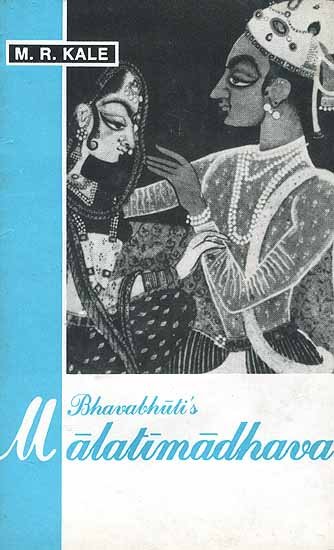Malatimadhava (study)
by Jintu Moni Dutta | 2017 | 52,468 words | ISBN-10: 8120813057 | ISBN-13: 9788120813052
This page relates ‘Women in Religious Field in 8th-century India’ from the English study on the Malatimadhava of Bhavabhuti:—A Prakarana type of Drama in ten acts revolving around the love-story of Malati (from Padmāvatī) and Madhava (from Vidarbha). This study discusses the history of its author and the literary, social, religious, historical and cultural aspects of the Malatimadhava.
Part 3.2 - Women in Religious Field in 8th-century India
In the religious activities women’s role was inevitable during early 8th century A.D. It is noticed that women did not suffer any religious inequality during Bhavabhūti’s time. Various religious sects or seat of worshipping had come into existence during Bhavabhūti’s time. It is observed in the Mālatīmādhava that Kāmandakī embraced Buddhism. Kāmandakī was a female Buddhist nun in the Monastery[1] and Saudāminī, who was pupil of Kāmandakī[2] , adopted asceticism and was meditating on the Śrīparvata.[3] There were temples or the practice of idol worshipping. It is evident from the Mālatīmādhava that Mālatī had repaired to the temple of Śaṅkara on 14th day of the dark half of the month to worship the god with flowers for the enhancement of her good fortune. Moreover, Mālatī’s mother ordered Mālatī to worship the deities at the commencement of the auspicious marriage rite for the attainment of good fortune.
During 8th century A.D. women appeared to have been ascetics. The yogis reflected the growing influence of Tantricism. Women acquired miraculous powers by practice of yoga. Yogic powers achieved through meditation were seen as a manifestation of control over the human body extending into mind. Levitation, flight and invisibility were possible through yogic power. Furthermore, women reached a climax in respect of exhibiting the miraculous power. Saudāminī attained the miraculous power by practising yoga to bear one aloft and then through space. Through the help of this miraculous power Saudāminī had flown up from the divine Śrīparvata to Padmāvatī.[4] In the 10th act when everyone had resolved to put an end due to separation from Mālatī at that moment a terrible admixture of darkness and lightening thwarting the perceptive power of the eye appeared for a moment and then vanished by the greatness of Saudāminī.[5] Again it has been known from the speech of Mādhava and Makaranda that Saudāminī descended from the sky parting the cloud, of whom the shower of nectarous water in the form of words surpassed the shower of water from the clouds.[6] Mādhava and Makaranda, subjected to affliction by the evil in the form of kapālakuṇḍalā’s wrath had been rescued from the calamity by Saudāminī with a resolute effort. However, women were seen to be achieved high during that period.
Footnotes and references:
[2]:
kathamiyaṃ sā bhagavatyāḥ pakṣapātasthānamādyaśiṣyāṃ saudāminī /
Ibid., IX.p.213
[3]:
[4]:
eṣāsmi saudāminī bhagavataḥ śrīparvatādutpatya padmāvatīmupāśritā
Ibid.,IX.p.176
[5]:
vyatikara iva bhīmastāmasau vaidyutaśca/
kṣaṇamupahitacakṣurvṛttirūdbhūya śāntaḥ//
kathamiha mama vatsastatkimetat kimanyat/
prabhavati hi mahimnā svena yogīśvarīyam//
Ibid.,X.8
[6]:
sā yoginyambarato vighaṭitajaladābhyupaityayaṃ yasyāḥ/
vāgamṛtajalāsāro jaladajalāsāramatiśete//
Ibid.,X.17
